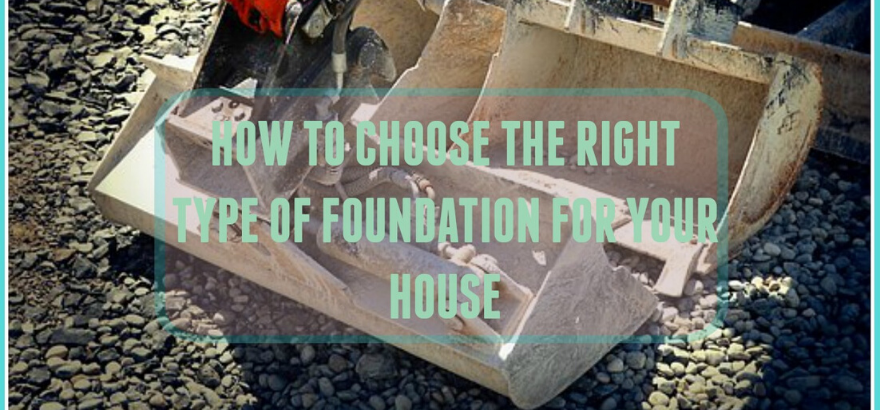Probably, you own a piece of land and plan to do a house construction in Kochi. But you are confused as your engineer is suggesting different types of foundation in construction and you don’t know much about them. All you know is rubble foundation, that follows a systematic laying of rocks. Something that your father or grandfather told you while constructing his dream home; where you spent your childhood.
How to choose the type of foundation for your House Construction in Kochi?

Well, it is quite natural to think that way. But do you know that every field has advanced in the past few years? And house construction in Kochi is not left out. The evolution of construction has given us different sort of foundation types that helps you to build a sturdy house over any type of soil. Know that the terrain of Kochi is so diverse – ranging from fertile hilly areas, saline coastal sands to city plains.
Rather than going on blindly with the view of the structural engineer, understand why he or she is recommending a particular type of Know MoreFoundation is the part of a building that connects the building to the ground and transfers the entire load of building to the ground for your house construction in Kochi.
Though we focus on the soil and foundation types for house construction in Kochi, the inputs in this blog can be applied to construction in general, as well.
Why does your structural engineer recommend a particular foundation in construction?
You may know already that foundation is the backbone of the house. It directly relates to the strength of the house and the number of storeys it can accommodate. It also helps you to determine the most appropriate type of roofing. But did you know that the kind of soil and the Know MoreStrata is a level below the top soil below the ground mainly determines the type of Foundation in construction?
Let us see in detail what helps your engineer to recommend a particular type of foundation for your plot.
Factors that decide the type of foundation for your house construction in Kochi
Precisely, there are two factors that helps your structural engineer to come up with a certain type of foundation in construction –
(1) Approximate weight of the proposed building and
(2) The strata.
Firstly, the engineer estimates the weight of the building. It is the sum total of number of floors to be constructed, the number of slabs to be built over it and the load it has to take (please note that this includes both live loads and dead loads). The foundation has to be strong enough to hold the entire weight of the building.
Secondly, analyse the Strata. Basically, this includes studying the soil condition of the ground and what lies below the topsoil. For any house construction in Kochi it is always recommended to carry out a soil testing. Soil testing is an in depth analysis of the soil to find out soil behaviour. It gives insights on key characteristics of soil like density, moisture content, presence of organic matter etc.
Also, different tests reveals how the behaviour of soil changes according to the external changes. For example, compaction test shows what happens to the soil when load is added.
Essentially, soil testing gives you a clear picture of the load bearing capacity of the soil.
Know More: Soil Testing before building construction.
The characteristic of underground soil, especially its strength to hold the weight forms a critical input to choose a foundation type. Strong strata like rock can endure the entire weight of the building. Unfortunately, rocks are not available everywhere. So in other places where the strata contains sand or clay, some reinforcement is required to make the soil as strong as rock. And to strengthen such weak strata and distribute the load, different types of foundations are used.
Types of foundation used in Kerala
The different types of foundations normally used in house construction in Kochi, Kerala are primarily categorized as 4 –
- Rubble Foundation
- Pillar Footing Foundation
- Raft Foundation(Strip Foundation) &
- Piling
Let’s look at each of these in detail.
1. Rubble Foundation
This is exactly what you know as a simple foundation in construction. Large rock pieces are used in a stepped manner to make rubble foundation. To construct it, a minimum of 2 feet depth trench is made on the ground and rubble (hard rock) is skillfully placed there. The rubble is tight packed so that the gaps in between are minimum. A Rubble Foundation runs directly beneath the layout of main walls of your house.
To make the rubble foundation stronger, a few more techniques are used. Sometimes, according to the soil condition, sand filling is done in between the rubble. For even stronger foundation, rubble packing with cement using ‘cement mortar joint’ on the top of a PCC (Plain Cement Concrete) is used.
The next step in Rubble foundation is a basement that is made over the rubble structure. Basement covers smaller area than the rubble layer beneath. And the width of basement area is determined by the distribution of load.
For example, let us say the thickness of the wall is 20 cms. And it could be catastrophic if you transfer the load of 20cms wall directly to the ground. To distribute the load of the wall, more area is created. Ideally making the basement 45 cms wide.
And often a concrete Know MoreBelt is a steel reinforced concrete structure that runs over the basement to evenly redistribute weight of building is provided over the rubble foundation to protect the building from differential settlement. (Differential settlement refers to the small load variations over the ground as well as strata variations below the ground)
Read More: Step by step procedure in laying Rubble foundation
2.Pillar Footing Foundation
How about houses that are heavier, say ones with more than two floors. Pillar Footing Foundation is ideal for such high rise buildings. In this type foundation, pillars are provided on the corners of the walls and footing (made of concrete) is given on the bottom of each pillar.
This distributes the weight of the pillar to the ground below using a larger base. For example for a 20-30 cms diameter pillar, a footing basement size of around 150×150 cms is used.
After constructing the footing, these pillars are connected to make the plinth beam. Plinth beam takes the load of walls. Further to that, more beams are used for roofing to hold the weight of the concrete slab.
Please note that pillar footing foundation is not an economical choice for a moderate sized individual house. It is widely used in high rise apartment houses though!
3.Raft Foundation
Let’s now look at / house construction on loose soil where rubbles shake and pillars can’t be cast? For such loose soil or marshy land, Raft Foundation is used. Here, prior to the foundation work the soil beneath is strengthened.
The strengthening of soil is done by a process called sand piling. In sand piling, sand is pushed below a layer of loose soil with pressure. This layer is tightened in such a way that the sand can withstand heavy load. And this tightened layer of sand (below the actual foundation) takes up the building load.
Raft foundation also features a basement, constructed entirely with concrete below the walls. This is constructed in inverted T shape so that the load of the wall and is distributed to the bottom part of T.
4.Piling or Pile Foundation
Pile Foundation is used when the soil below is of the least quality. Our engineers put it in simple words as “Piling is like piercing screw in to the land, by digging a hole and inserting the materials”. Pile Foundation is of two types – Under Reamed piles and Direct Mud Circulation piles (DMC piles).
Under Reamed Piles
Under Reamed Piles uses friction of soil and hence also called as Friction piles. For friction piles, holes are dug and the side walls are strengthened with chemicals. Steel rods are inserted to this hole and concrete is added. The friction produced by side walls of the hole and surface area of pile, keep the pile strong.
DMC Piles
In DMC piles, the piles are positioned on the top of a rock beneath the soil. The land is pierced till rock is found. The pile is anchored to the pierced rock and steel structure is inserted to be concreted.
In both under reamed and DMC piles 25 to 30 piles are constructed for a 2000 to 2500 square feet building (on an average PSI (Pounds per Square Inch – measuring unit of concrete’s strength)). Once piles are constructed, pile caps are made over it. Pile cap transfers the load from the main building structure to the pile.
Piles are usually made on every corners of the room. A large beam called grade beam, runs over connecting all piles to distribute load between the piles. This ensures that any differential settlement among the piles will be accommodated by the beam and is distributed with the entire set of piles. And walls are then constructed over the grade beams.
In a nutshell, all foundation types makes the soil beneath strong so that it can withstand the load of the house.
Here are a few pictures that would help you understand technical specifications and samples of the different types of foundations used in house construction in Kochi.
You may like these as well
Extra care for the foundation in construction at Viya
The foundation in construction that involves beams like Raft, Pillar Footing and Pile requires some extra care. The top of the beam needs a brickwork or a rubble filler work. This fills the gap between plinth beam and the finished floor. Further, plaster the inside walls of these brick construction. This avoids water seeping in through the bricks to the floors on the top. This small brick wall will hold the land within foundation which is then layer filled with soil.
As a footnote, a generic cost comparison makes rubble foundation in construction the cheapest one. It is followed by pillar footing, after which raft foundation, followed by under reamed piles and finally DMC piles. With the immense number of projects undertaken so far, our experience is that Raft Foundation is more economical than Piling and Pillar Footing when the overall structure of the building is considered.
Getting the foundation in construction right is a complex process. Hence always entrust it on experienced builders. Walk in to our Viya office to talk to our engineer. Also check out the foundations types that we have used in our completed and ongoing house construction in Kochi.
Please let us know your requirements for house construction in Kochi in this form and we shall provide you with a FREE quote.
